
- HIPAA Credentials
- How to Select HIPAA Training Company, Course and Certification
- Certified HIPAA Privacy Security Expert (CHPSE)
- Certified HIPAA Security Expert (CHSE)
- Certified HIPAA Privacy Expert (CHPE)
- HIPAA Overview Training – CHPA
- Maintain HIPAA Credential
- How to Select HIPAA Credential
- Benefits of HIPAA Logos
- HIPAA Certifications FAQ
- HIPAA Training
- Other Courses
- HCISPP Certification Training Course: Online, Classroom and Onsite
- Certified CyberSecurity Awareness Professional Certification Training
- Bloodborne Pathogens Training
- Texas House Bill 300 (HB 300) Training
- Continuing Education Courses for HIPAA Certification
- Data Protection Training
- Texas Data Privacy and Security Act Course
- Globally Harmonized System Course
- Medical Fraud, Waste and Abuse Training Course for Medicare/Medicaid
- Sexual Harassment Prevention Course for Employees Online and Instructor-Led
- Fire Safety Online Training
- HIPAA Compliance Tool
- HIPAA Compliance ToolKit
- HIPAA Security Policies Procedure Templates: Overview
- HIPAA Privacy Policy Templates
- HIPAA Security Contingency Plan/Business Continuity Plan (BCP) and Disaster Recovery Plan (DRP) Templates Suite
- HIPAA Security Risk Analysis templates
- Small Business Disaster Recovery Plan and Business Continuity Template Suite
- HIPAA Compliance FAQ
- Become a Reseller
- Other HIPAA Templates
- Hospital Disaster Recovery and Business Continuity Plan for JCAHO & HIPAA
- Enterprise Contingency Plan Template Suite
- Enterprise Contingency Plan Template Suite for Business Impact Analysis, Disaster Recovery, Risk Assessment, Business Continuity Templates
- Pandemic Disaster Plan Template Suite
- HIPAA Disaster Recovery Plan and Business Continuity Plan for Health Plan
- Business Associates Disaster Recovery and Business Continuity Plan
- Compliance Packages
- Compliance Solutions
- HIPAA Compliance ToolKit
- Contact Us
Globally Harmonized System Course
What is Globally Harmonized System (GHS) for Hazard Communication (HazCom)?
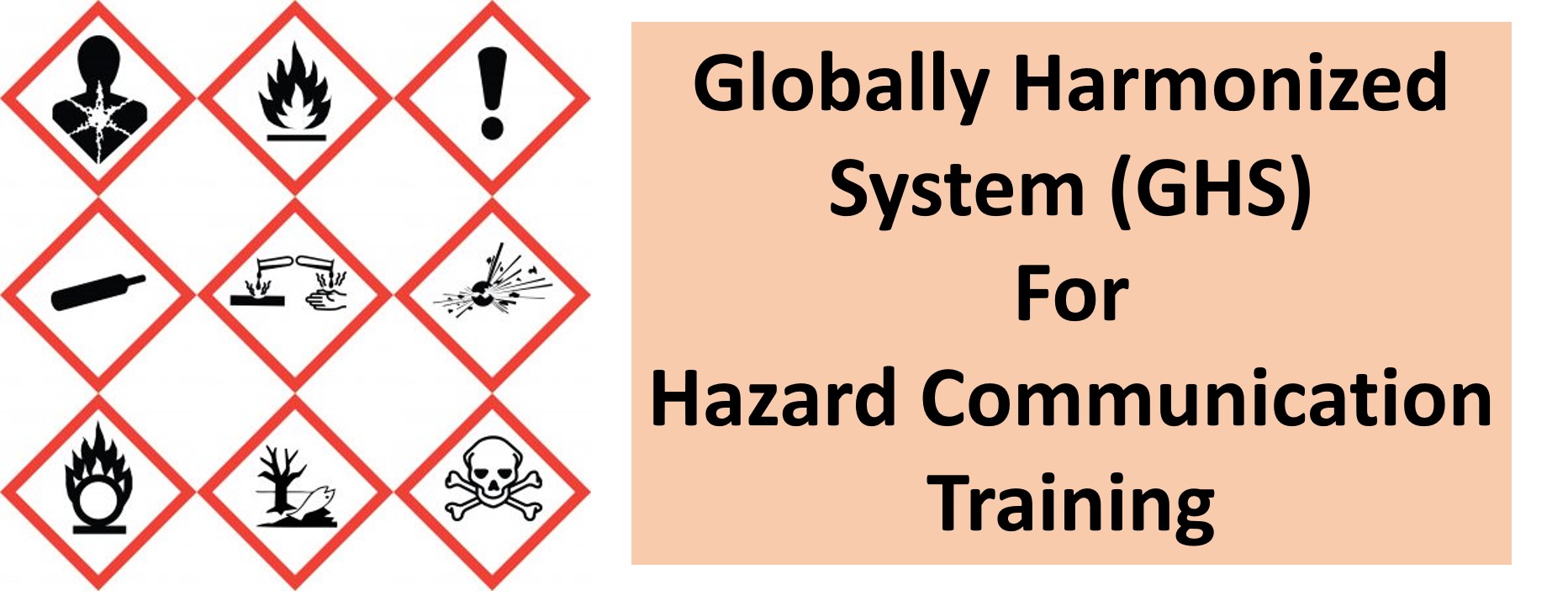 The Globally Harmonized System (GHS) is an international approach to hazard communication, providing agreed criteria for the classification of chemical hazards, and a standardized approach to label elements and safety data sheets. The GHS was negotiated in a multi-year process by hazard communication experts from many different countries, international organizations, and stakeholder groups. It is based on major existing systems around the world, including OSHA’s Hazard Communication Standard and the chemical classification and labeling systems of other US agencies.
The Globally Harmonized System (GHS) is an international approach to hazard communication, providing agreed criteria for the classification of chemical hazards, and a standardized approach to label elements and safety data sheets. The GHS was negotiated in a multi-year process by hazard communication experts from many different countries, international organizations, and stakeholder groups. It is based on major existing systems around the world, including OSHA’s Hazard Communication Standard and the chemical classification and labeling systems of other US agencies.
The result of this negotiation process is the United Nations’ document entitled “Globally Harmonized System of Classification and Labeling of Chemicals,” commonly referred to as The Purple Book. This document provides harmonized classification criteria for the health, physical, and environmental hazards of chemicals. It also includes standardized label elements that are assigned to these hazard classes and categories and provide the appropriate signal words, pictograms, and hazard and precautionary statements to convey the hazards to users. A standardized order of information for safety data sheets is also provided.
What are the Major Changes to the Hazard Communication Standard (HCS) in the USA?
OSHA revised its Hazard Communication Standard (HCS) to align with the United Nations’ Globally Harmonized System of Classification and Labeling of Chemicals (GHS) and published it in the Federal Register in March 2012 (77 FR 17574). Two significant changes contained in the revised standard require the use of new labeling elements and a standardized format for Safety Data Sheets (SDSs), formerly known as, Material Safety Data Sheets (MSDSs). The new label elements and SDS requirements will improve workers’ understanding of the hazards associated with the chemicals in their workplace.
In order to ensure chemical safety in the workplace, information about the identities and hazards of the chemicals must be available and understandable to workers.
- Hazard classification: Provides specific criteria for the classification of health and physical hazards, as well as the classification of mixtures.
- Labels: Chemical manufacturers and importers will be required to provide a label that includes a harmonized signal word, pictogram, and hazard statement for each hazard class and category. Precautionary statements must also be provided.
- Safety Data Sheets: This Will now have a specified 16-section format.
- Information and training: Employers are required to train workers on the new labels elements and safety data sheets format to facilitate recognition and understanding.
Cost $25
Buy Globally Harmonized System (GHS) Course Now
What pictograms are required in the revised Hazard Communication Standard?
A. There are nine pictograms under the GHS to convey the health, physical and environmental hazards. The final Hazard Communication Standard (HCS) requires eight of these pictograms, the exception being the environmental pictogram, as environmental hazards are not within OSHA’s jurisdiction. The hazard pictograms and their corresponding hazards are shown below.
HCS Pictograms and Hazards
Health Hazard
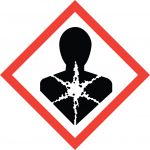
- Carcinogen
- Mutagenicity
- Reproductive Toxicity
- Respiratory Sensitizer
- Target Organ Toxicity
- Aspiration Toxicity
Flame
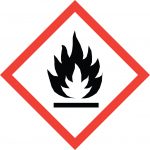
• Flammables
• Pyrophorics
• Self-Heating
• Emits Flammable Gas
• Self-Reactives
• Organic Peroxides
Exclamation Mark
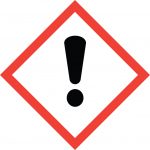
- Irritant (skin and eye)
- Skin Sensitizer
- Acute Toxicity (harmful)
- Narcotic Effects
- Respiratory Tract Irritant
- Hazardous to Ozone Layer
- (Non Mandatory)
Gas Cylinder
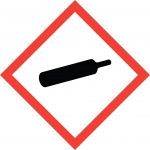
- Gases under Pressure
Corrosion
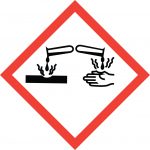
- Skin Corrosion/ burns
- Eye Damage
- Corrosive to Metals
Exploding Bomb
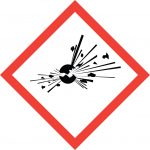
- Explosives
- Self-Reactives
- Organic Peroxides
Flame over Circle
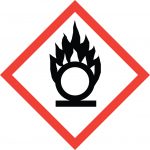
- Oxidizers
Environment (Non Mandatory)
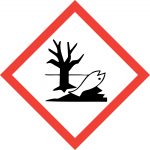
- Aquatic Toxicity
Skull and Crossbones
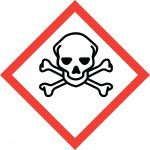
- Acute Toxicity (fatal or toxic)
What is Employer’s Responsibility under GHS to Meet the Compliance Requirements?
- Educate and train workers on the hazards and safe use of products.
- Ensure that hazardous materials are properly labeled.
- Prepare workplace labels and SDSs as necessary.
- Provide access for workers to up-to-date SDSs.
- Ensure appropriate control measures are in place to protect the health and safety of workers.
- Ongoing audit for policy implementation, process, and procedures for GHS.
Who is required to take this course?
This course is suitable for workers in organizations of all sizes, in industries and occupations where hazardous products are found. Employees working in healthcare, pharma, petrochemicals, oil and gas, construction, manufacturing, and other specialty industries should take this training.
Benefits of taking Online GHS HazCom training
- Avoid OSHA penalties for noncompliance
- Reduce workplace accidents due to hazardous products.
- Improve workplace safety records
- Potentially reduce the liability insurance premiums
- Will enable the individual to integrate the GHS plan into their workplace
- Will be able to educate and design educational programs for their fellow workers to the element of GHS and how it applies to their job duties
- 24 x 7 access from anywhere for self-paced online courses
- Instantly print or download Nationally Recognized Certificates
- Online course with audio and PowerPoint slides for easy understanding of training
Why are you required to take this training?
Per the final rule issued March 26, 2012, the Department of Labor has adopted the United Nations’ Globally Harmonized System (GHS) of Classification and Labeling of Chemicals. This change ensures OHSA’s alignment with internationally-developed guidelines for the categorization and labeling of hazardous substances. June 1, 206 Deadline to update alternative workplace labeling and hazard communication programs, and provide any additional employee training.
Employers are required to educate workers on the new Globally Harmonized System (GHS) labeling system for hazardous chemicals as well as how to read and interpret a safety data sheet (SDS).
- All workers must be trained on the chemical hazards they may encounter BEFORE they are exposed to, use, and/or work with the hazardous chemical(s). There is no grace period for this hazard communication training.
- ALL workers are required to be trained on the new label elements and SDS format as part of their employment on an annual basis thereafter.
Cost $25
Buy Globally Harmonized System (GHS) Course Now
Course Overview
Total Course Duration: 30 minutes
Audio: Yes
Number of Total Slides: 53 slides
Online course login expires in: 2 months from receiving the login details. You will not have access to online content after you complete the course.
Certificate valid for: One Year
Type of License: One user license cannot be transferred after login is assigned
Course Outlines
- Introduction & Background
- Hazard Communication & GHS
- Required Elements
- The scope of the GHS
- Three Categories of Hazards
- What are GHS Hazards?
- GHS Physical Hazards:
- GHS Health Hazards
- GHS Environmental Hazards
- Safety Data Sheets
- Role of the SDS in the GHS
- SDS Format: 16 headings
- Labeling
- Label Elements
- Pictograms
- Exclamation Mark
- Health Hazard
- Flame
- Gas Cylinder
- Corrosion
- Exploding Bomb
- Flame over Circle
- Skull & Crossbones
- Environmental
- Summary
Certificate for Continuing Education Credits:
Students can buy a CE credits certificate for this course at the time of registration. You will receive one CE credit for this course through the Approved Provider of California Board of Registered Nursing after completing the course.
Testimonials
- Great course. very precise and clear in information
Kelvin Jones - This program was very helpful and informative
Rebecca Lynn Wright - This was a great course that discussed relevant material
Saba Saleem - Very helpful and easy to understand!
Nahiyan khandker - Useful information for safety workplace
TAMAR KHZAALI - This lesson was well understood with simple language to the barest minimum. Thanks for helping the people (worker and employers) stay safe in our everyday lives.
Onuwabhagbe christian Ituah - What a great course in all the different hazards of dealing with chemicals and there classifications
Robert S Riley - Understanding hazard communication and safety protocols has completely changed how I approach workplace safety. Before, I didn’t realize the potential risks of exposure to harmful substances, but now I feel confident in identifying hazards and taking proper precautions. This training doesn’t just protect individuals—it safeguards entire teams and ensures a healthier work environment for everyone.
JOSE MIGUEL - This lesson was incredibly instructive and informative, providing clear explanations that deepened my understanding of the subject. The concepts were presented in an engaging way, making complex ideas easy to grasp. Overall, it was a valuable learning experience that enriched my knowledge significantly.
Pedro Vazquez
Please contact us for more information at Bob@training-hipaa.net or call (515) 865-4591.
Globally Harmonized System Course Now is rated 4.8 out of 5 by 532 users.